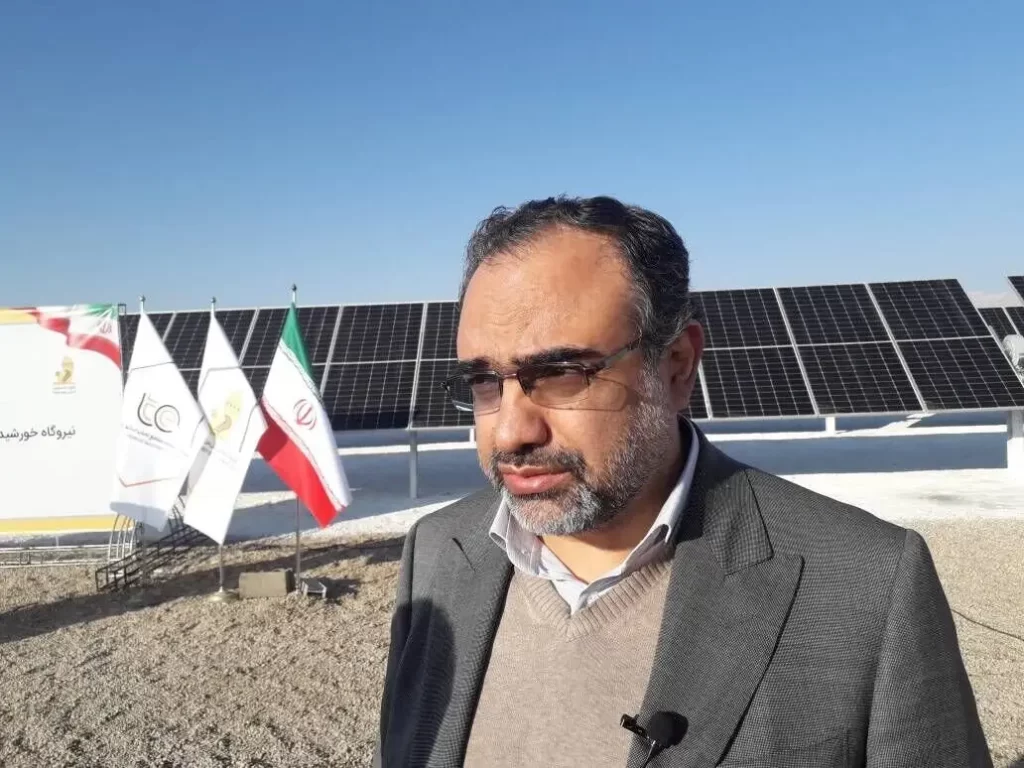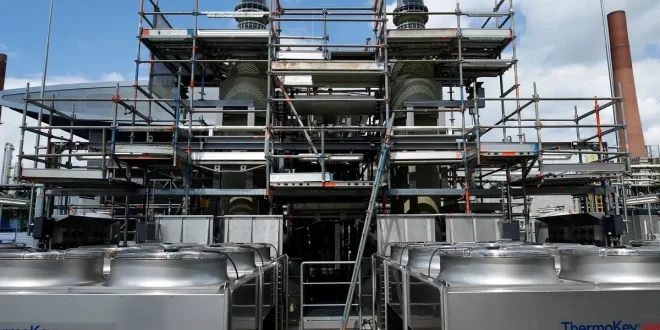Iran currently lacks a substantial presence in the burgeoning hydrogen industry, despite its abundance of natural gas and renewable energy potential.
Utilizing renewable energy sources such as solar or wind power, “green hydrogen“ is produced by electrolysis, which produces hydrogen without any emissions. This contrasts with traditional techniques that release carbon dioxide.
Experts anticipate the global hydrogen market, a pivotal energy source, to reach a staggering annual value of $700 billion by 2050. However, Iran finds itself outside the current trajectory of this evolving market.
Hydrogen, recognized for its cleanliness and sustainability, holds immense potential as a major contributor to power generation. Its significance lies in fuel cells, combustion, and energy storage, making it a crucial element in transitioning to a low-carbon and sustainable energy system. The appeal of hydrogen for practical applications stems from its remarkable energy content per weight, approximately three times higher than gasoline.
Iran faces vulnerabilities in its energy security due to market and geopolitical risks, given its heavy reliance on natural gas, especially from the South Pars field in the Persian Gulf. To enhance resilience, Iran must diversify its energy sources, with a particular emphasis on hydrogen and renewables. This shift aligns with global environmental trends and is imperative for the nation’s economic and energy security.

Last July, Mahmoud Kamani, the Deputy Minister of Energy, announced that the drafting of a national hydrogen document by the Renewable Energy and Electricity Efficiency Organization of Iran (SATBA) is underway. In the context of Iran, Kamani stressed the need to draft a national hydrogen document to leverage its diverse applications effectively. SATBA, serving as the secretariat for this initiative, has activated relevant working groups to facilitate the process. According to Kamani, while hydrogen is currently produced from natural gas, there is a potential to shift towards hydrogen derived from renewable energy sources, although Iran’s renewable energy sector is underdeveloped and very small.
To compete in the hydrogen production market, Iran must establish a sustainable energy generation infrastructure. However, it lags behind regional counterparts like Turkey and Saudi Arabia in various forms of renewable energy. Turkey, for instance, surpasses Iran significantly in wind and solar power, as well as hydroelectric capacity. Building a robust energy infrastructure is essential for Iran to catch up and contribute meaningfully to the hydrogen market.
Jalil Salari, Deputy Minister of Oil for Refining and Distribution of Petroleum Products, has highlighted that the cost of producing a ton of hydrogen from hydrocarbon sources is around $400. Economic considerations are crucial, especially for incorporating hydrogen into the transportation sector. Currently, Iran’s oil refineries produce approximately 300 million cubic feet of hydrogen per day, or about 700 metric tons daily, amounting to around 260,000 tons annually.
Despite challenges, Iran pursues a hydrogen energy system, particularly in transportation. The country’s hydrogen plan aims to leverage its natural gas reserves for production. Overcoming cost variations, especially in electrolysis, is a key challenge. Implementing the plan not only addresses environmental concerns but also positions hydrogen as a viable alternative in Iran’s transportation sector.
In contrast, the GCC is strategically diversifying its economy and investing in renewable energy, including hydrogen, to reduce reliance on oil revenue. Saudi Arabia, the UAE, and Oman actively engage in green hydrogen production, with Saudi Arabia aiming for 2.9 million tons annually by 2030, the UAE aspiring to be a top 10 hydrogen producer by 2031, and Oman planning over 1 million tons by 2030, increasing to 8.5 million tons yearly by 2050. These nations aim for a significant role in the global green hydrogen economy, contributing to emission reduction and the transition to sustainable energy sources. Neighboring countries of Iran have also initiated their own long-term hydrogen plans with substantial investments and advanced technologies.
Iran risks setbacks in the global hydrogen market by prioritizing crisis management over long-term economic development. While still potentially exporting hydrogen, neighboring countries are reducing reliance on oil revenues, highlighting the need for Iran’s strategic planning in the evolving energy landscape.
Concerns arise about Iran’s historical reliance on crisis management in navigating the global energy transition. The establishment of a hydrogen working group by the National Iranian Oil Company is a step forward, but substantial efforts are crucial for organized planning and economic growth. The working group’s effectiveness depends on developing a comprehensive plan, stressing the necessity of integrating hydrogen into Iran’s overarching economic and energy strategy.
Iran has several obstacles in its efforts to produce hydrogen from the refining of oil, including technological, financial, and environmental ones. Using cutting-edge techniques like partial oxidation or steam methane reforming (SMR) presents issues with cost, efficiency, and environmental effect. The technological difficulty of ensuring hydrogen purity increases, necessitating large infrastructure expenditures in the face of budgetary restrictions.





